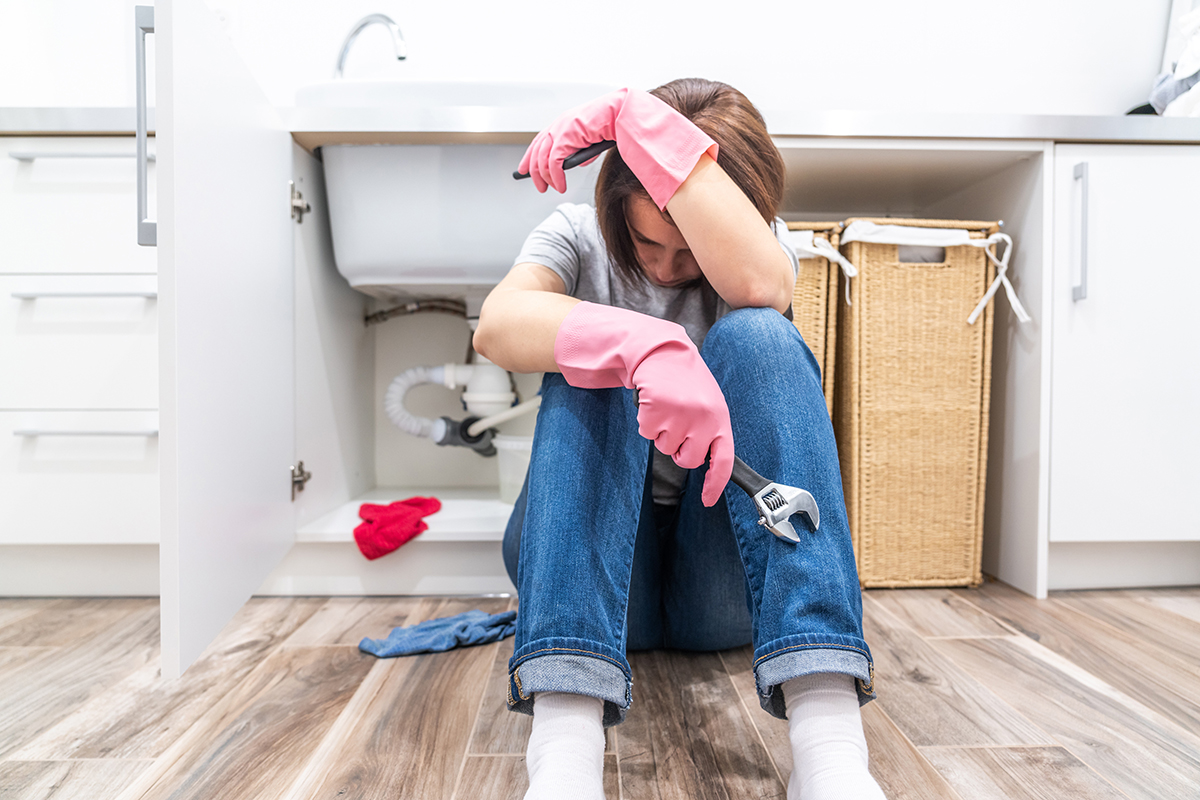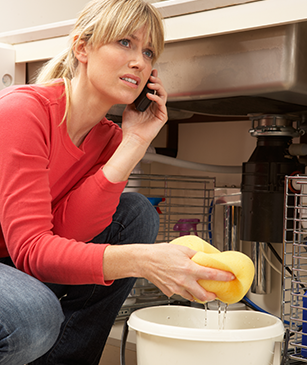Straightforward Steps to Stop a Leak in Your Garbage Disposal
Straightforward Steps to Stop a Leak in Your Garbage Disposal
Blog Article
Were you hunting for know-how concerning Why Is ?

Garbage disposals are important cooking area devices that aid in dealing with food waste effectively. However, a dripping waste disposal unit can be a discouraging and untidy trouble to deal with. The good news is, lots of leaks can be dealt with quickly with a few straightforward steps. In this short article, we will certainly talk about exactly how to deal with a dripping waste disposal unit successfully.
Introduction
Waste disposal unit are set up under cooking area sinks and are made to shred food waste right into smaller sized pieces, enabling it to pass through the plumbing system quickly. While these tools are typically dependable, leaks can take place over time due to deterioration, loosened links, or damage to the unit.
Common Reasons For Leakages in Rubbish Disposals
Worn Seals and Gaskets
Seals and gaskets play an important role in preventing water from dripping out of the waste disposal unit. With time, these parts can degrade, causing leaks around the disposal device.
Loose Links
The links in between the garbage disposal and the pipes system can come to be loosened gradually, causing water to leak out during procedure.
Fractures or Holes in the Disposal Device
Physical damage to the waste disposal unit, such as cracks or openings in the real estate, can also lead to leaks.
Identifying the Resource of the Leak
Prior to attempting to take care of a dripping garbage disposal, it is vital to determine the source of the leak. This can commonly be done through visual inspection or by carrying out basic examinations.
Visual Examination
Evaluate the garbage disposal unit thoroughly for any signs of water leakage. Pay close attention to locations around seals, gaskets, and link factors.
Evaluating for Leaks
One means to test for leakages is by running water through the disposal system and checking for any type of visible signs of leak.
Tools and Materials Needed for Dealing With a Dripping Garbage Disposal
Prior to beginning the repair service process, collect the required devices and products, consisting of a screwdriver, adjustable wrench, plumber's putty, substitute seals or gaskets, and epoxy or patching product for fixing fractures or holes.
Step-by-Step Guide to Repairing a Leaking Garbage Disposal
Turn Off the Power
Before attempting any repairs, guarantee that the power to the waste disposal unit system is switched off to avoid the danger of electric shock.
Locate the Leakage
Recognize the specific area of the leak and identify the reason.
Tighten up Links
Utilize a wrench to tighten any kind of loose links in between the disposal unit and the pipes system.
Change Seals or Gaskets
If the leak is due to used seals or gaskets, remove the old parts and replace them with new ones.
Patching Cracks or Openings
For cracks or openings in the disposal unit, usage epoxy or a suitable patching material to secure the damaged area.
Checking the Garbage Disposal After Repair Work
Once the fixing is complete, examine the garbage disposal by running water through it to ensure that the leakage has actually been settled.
Preventive Maintenance Tips to Prevent Future Leaks
To avoid future leaks, it is essential to do routine upkeep on your waste disposal unit. This consists of keeping it clean, staying clear of putting non-food products or tough items down the disposal, and periodically checking for leaks or various other concerns.
Final thought
Finally, dealing with a dripping garbage disposal is a fairly straightforward process that can be completed with basic devices and products. By adhering to the actions detailed in this write-up and exercising preventative maintenance, you can keep your garbage disposal in good working problem and prevent costly fixings in the future.
What to Do About a Leaking Garbage Disposal
A leaking garbage disposal often goes unnoticed until you confront a sopping cabinet, a foul-smelling puddle, or an audible drip-drip-drip from the unit. The fix can be frustrating, too, because the leak can stem from a number of components in the system. Fortunately, with a little sleuthing, you can zero in on the leak and—depending on the exact location—stop the icky oozing and repair the component that caused it. Worst case scenario, if it turns out that the garbage disposal must be replaced, installing a new one is a reasonable do-it-yourself task for those with basic plumbing skills. Read on to keep the cash you’d otherwise hand over to a pro.
Prepare to find the leak
Prior to testing the garbage disposal for leaks, unplug it at the wall outlet and turn off the power from the breaker box to prevent electrical shock. Then insert a watertight sink stopper into your sink drain and wipe the unit dry with a clean cloth. In any handy container, mix a few drops of food coloring into a few cups of water, and pour the dyed water onto the sink stopper to help you locate the leak.
Investigate the source
the top, where the disposal meets the sink drain the side, where the dishwasher hose or main drain pipe connects to the disposal or the bottom of the unit Inspect each of these locations while gliding a light-colored rag over the unit; the dyed water will readily show on the rag and reveal the location of the leak. If a leak isn’t immediately apparent, remove the sink stopper and pour a few more cups of dyed water down the sink drain, then check for leaks again. Leaks near the top of the unit are more likely to show themselves while the sink is plugged, while side and bottom leaks are more noticeable while the sink is unplugged.
The metal sink flange that sits directly inside the sink drain is typically sealed around the top with plumber’s putty (a clay-like sealant) and then secured from under the sink with bolts. If the plumber’s putty deteriorates, or the bolts loosen, the flange can no longer form a watertight seal between the sink drain and the disposal—which could cause a leak at the top of the unit.
To reseal the leaky flange, you must first detach the garbage disposal. Start by loosening the screws securing the main drain pipe to the disposal, then loosen the screws in the metal clamp securing the dishwasher hose to the disposal and detach the drain pipe and dishwasher hose from the disposal. Loosen the screws in the mounting ring that connects the disposal to the metal mounting assembly beneath the sink, then pull down the disposal and carefully set it on a clean, dry surface. Loosen the bolts in the mounting assembly with a wrench, then pull down the mounting assembly and set it near the disposal.

I have been very fascinated with Why Is and I'm hoping you appreciated the entire blog post. Do you know about another person who is excited by the niche? Take a moment to promote it. I am grateful for your time. Come back soon.
Apply Now Report this page